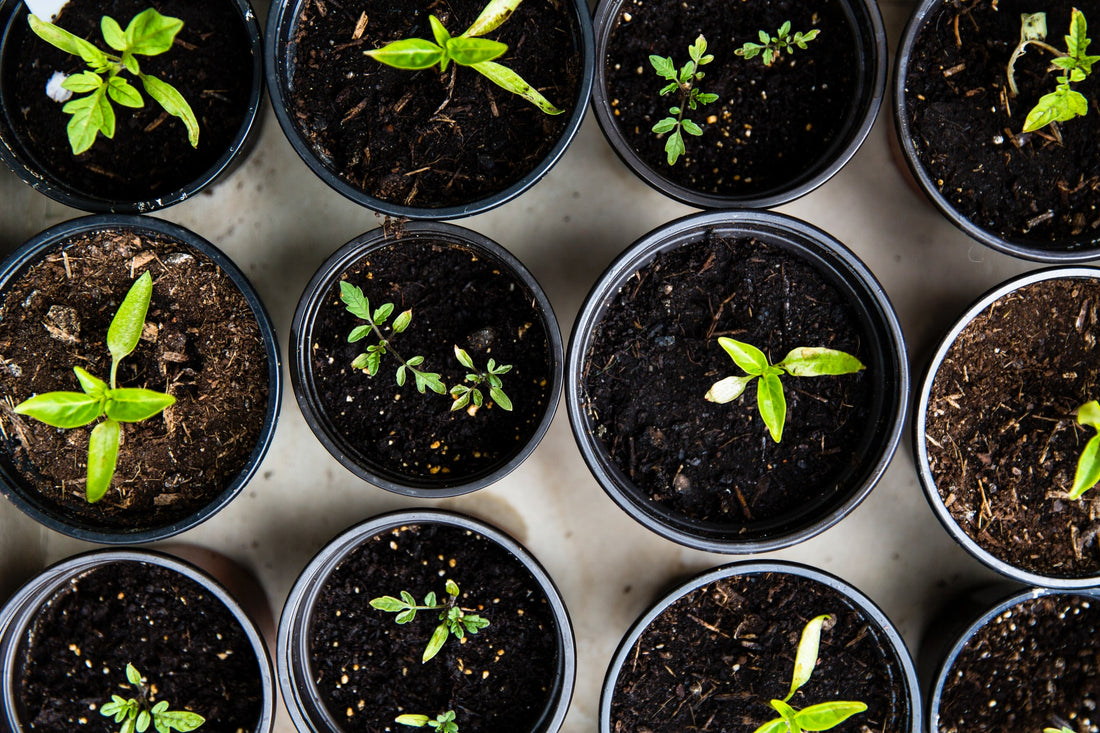Buying Seeds vs. Seedling Starts
Seeds are the least expensive route to go. Seeds, in general, cost $2-4 per packet and contain anywhere from 20-200 seeds. Depending on your garden size, you may find you don't use them all. But, even if you only use half the packet, the cost per plant is minimal.The main benefit to buying seeds is you have complete control over what you are getting. You can choose the specific variety of cucumber you want. If you are seeking a diversity of vegetables or seeking a particular type, this is the way to go.
Buying seedlings from your local nursery or farmer's market can cost you $2-10 per plant. Getting plants that have already been started by someone else may be beneficial time-wise for you and, for many, worth the higher investment.
However, going this route limits what you are going to be grow. You can only buy what the seller is offering. If you were looking forward to a specific type of pepper, you may find it unavailable in a seedling start and have to choose another or do without. If you aren't holding out for a particular variety, then buying starts is a simple, easy option.
Starting from Seed, Is It Best To Start Seeds Inside or Outside?
The main consideration when deciding whether to start your seeds inside or outside comes down to the individual vegetables and where you live.If you live in a temperate climate, you have a longer growing season and don't have to worry about the plants having enough time to grow to maturity. Folks who live in a place with a short growing season, like the northeast, need to plan a bit more and make sure all their plants have adequate time to reach maturity. Starting seeds inside several weeks before the last anticipated frost extends the growing season.
For those who are dealing with a short growing season, each vegetable you want to grow needs to be assessed individually to figure out if it can wait until the ground is ready or whether it needs a head-start. If starting seedlings indoors is not an option, then only those vegetables with a shorter growing season should be chosen.
Vegetables like tomatoes, peppers, eggplant, cucumbers, melons, and winter squash demand a longer grow time, and all need to be started indoors if you have a limited growing season.
Planting outdoors may increase the chances of seed loss because of inclement weather or hungry critters. Lots of rain can wash the seeds away or cause them to rot; too much sun can dry the seeds out so much they don't even start growing.
Starting Seedlings Outdoors
Planting your seeds directly into your garden is as straightforward as it sounds. Each packet of seeds lists how deep to sow the seeds, what the spacing should be, and how many days until the plants reach maturity. Follow the instructions on each individual seed packet. In general, sowing your seeds directly into the garden will take a few hours or a day, depending on how many you are planting.Starting Seedlings Indoors
Before you decide to plant indoors, evaluate the space you have available. The seeds need to be watered regularly and get lots of light. They do best with a space in front of a sunny, south-facing window. Seeds need around 8-12 hours of sunlight per day. Depending on the vegetable, seeds will take 4-21 days to germinate, and then they need to grow hearty enough to be transplanted outside. A good rule of thumb is to plant indoors six weeks before the last frost.After you have found the space to keep the seedlings, the next step is to get all the supplies to start planting. You will need potting soil, planting containers, space markers to write down what you planted (it's amazing how fast it can get confused ten weeks later!), and a watering can. After you've planted your seeds, you will need to check on them every day. Most seedlings need watering at least once a day.
Growing vegetables and flowers is an incredible adventure. Best of all, it doesn't take much to get started. All you need is some seeds, dirt or potting soil, and the resolve to nurture the little seedlings into full grown plants.



